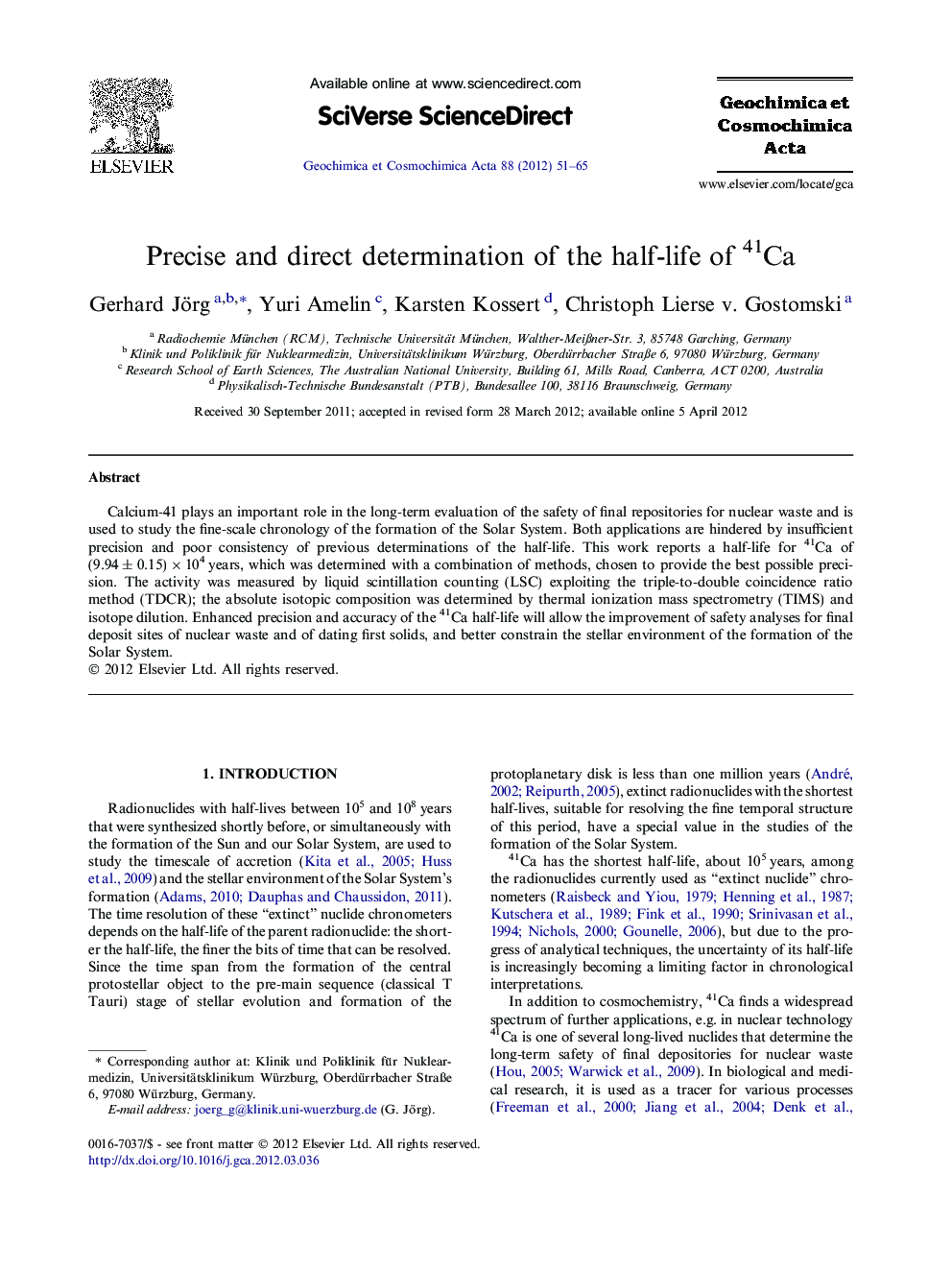| Article ID | Journal | Published Year | Pages | File Type |
|---|---|---|---|---|
| 6439214 | Geochimica et Cosmochimica Acta | 2012 | 15 Pages |
Abstract
Calcium-41 plays an important role in the long-term evaluation of the safety of final repositories for nuclear waste and is used to study the fine-scale chronology of the formation of the Solar System. Both applications are hindered by insufficient precision and poor consistency of previous determinations of the half-life. This work reports a half-life for 41Ca of (9.94 ± 0.15) Ã 104 years, which was determined with a combination of methods, chosen to provide the best possible precision. The activity was measured by liquid scintillation counting (LSC) exploiting the triple-to-double coincidence ratio method (TDCR); the absolute isotopic composition was determined by thermal ionization mass spectrometry (TIMS) and isotope dilution. Enhanced precision and accuracy of the 41Ca half-life will allow the improvement of safety analyses for final deposit sites of nuclear waste and of dating first solids, and better constrain the stellar environment of the formation of the Solar System.
Related Topics
Physical Sciences and Engineering
Earth and Planetary Sciences
Geochemistry and Petrology
Authors
Gerhard Jörg, Yuri Amelin, Karsten Kossert, Christoph Lierse v. Gostomski,
